The story goes something like this, which appeared in Granta in May, 1989. Bruce Chatwin was chasing an essay on Russian artists of the 1920s, and as a sidecar to visiting the home of an architect in St. Petersburg, he had dinner with a woman named Vavara Rodchenko, the daughter of Alexander Rodchenko. Chatwin made no fuss over the dinner whatsoever (he could treat sublime moments as though he found a head of lettuce on sale), but, after falling into conversation with Vavara, he asked her about three canvases Rodchenko showed in an exhibition in 1921. Later on, Vavara produced three different rolled canvases and stretched their contents on the ground: one red canvas, one yellow canvas, and one blue (“What a blue!” Chatwin said). However, it was no large matter. Chatwin had not yet even reached the highlight of his trip, which to him was a visit to one Mr. Melnikov.
I’ve added a certain “man with the whip and hat” flair to Chatwin’s deadpan prose when I’ve told Chatwin’s story to others. In my version, Chatwin encounters a woman in the house of Melnikov, and she’s only later revealed as Vavara Rodchenko, as a secret identity might reveal itself in a noir film. There is no dinner, but there is a great deal of strategy to my Chatwin, who has to build up an amount of intrigue to the conversation before asking the daughter about her father’s monochromes. Upon hearing the question and giving no answer, Vavara makes her way to the basement (of course!) of the house where she finds three tubes containing three bits of canvas under an old couch.
At the heart of the stories, mine and Chatwin’s, is the triptych, Pure Red, Pure Yellow, and Pure Blue, 1921. The paintings were made during Russia’s communist revolution, during a time of vast and sweeping changes across the country, of people being assessed and organized into their respective productive roles. Art was considered part of the revolution: art wanted and eventually would be required to be productive to the proletariat retooling of society. Decisions about what was “bourgeois” or a part of the old order of art (as opposed to what was proletariat and useful to the revolution) were made swiftly, often with little reflection, and sometimes rooted in ridiculous prejudices. However, it was also a time of tremendous optimism and Pure Red, Pure Yellow, and Pure Blue, believe it or not, is an optimistic painting.
“I reduced painting to its logical conclusion and exhibited three canvases: red, blue and yellow. I affirmed: it’s all over,” Rodchenko wrote. “Basic colors. Every plane is a plane and there is to be no representation.”
In other words, Rodchenko could get on with making agitprop posters, films, music, whatever form he needed to convey the message, spirit, and usefulness of the new state. Representation smacked of art in service of the rich (the Tsar and the church)—of all of those courtly and estate gestures that enslaved the peasants for so long—so he got rid of it. Looking back at it now, Rodchenko and his peers were quite high-minded and moral.
The deep irony of this, of course, is that abstraction too would quickly be seen and labeled by the state as totally and irredeemably bourgeois. By 1930, Kasimir Malevich would be locked up in prison, labeled a “formalist,” or someone who offers art not for serving society but only for the sake of form.
The difference between me and Chatwin: I longed to see Pure Red, Pure Yellow, and Pure Blue. For me, it was the story. I wanted to pursue it to St. Petersburg, attend the object and let it speak, as any other ruin from history would speak. I wanted find my own meaning in the silence of Chatwin’s departure from the painting. It would be a way of staring into an end that never came to pass.
However, I never booked my passage to Russia. Pure Red, Pure Yellow, and Pure Blue would have to simply exist in my mind, an untested void that I had yet to stare into.
*************
When the bells went off during the consecration at the Catedral Metropolitana in Mexico City a few weeks ago, I was on the steps of the Temple Mayor museum, a few hundred yards off the back corner of the cathedral’s massive footprint. On the steps (actually more of a porch or a path) in front of a non-descript, bunker-like building, I saw the successive rebuilds of the enormous temple of the Aztecs, the same temple that Cortés encountered in the early 16th century before eliminating the people, draining the lake, and establishing a Spanish city on the soft sinking soil. From my vantage point on the steps, I faced a wall of sculptured skulls. But minutes before, I faced down a short bit of stone which served as the focal point of the temple for decades. This was the site of human sacrifice.
The largest bell of the cathedral (named Santa Maria de Guadalupe) weighs 29,000 pounds, and when it goes off, the concussions of its song reverberate across the massive Zócalo square, with its Sunday morning guests perched on rooftops overlooking the Christmas decorations and having coffee. Across a large portion of the square is what one might call the return of the great lake of Mexico City, a sheet of ice that had been laid down for skating for the winter holidays. The amount of vantage points to the central bell are, in many ways, infinite, but you can actually see the body of one man whirling and pulling the rope of the bell, doing a sort of dance to make it ring. His features can’t be made out but his task and his motion is very clear in the morning and you can see him all the way from the back of the old pyramid where I happened to be standing. The presence of this body snaps the city and square to attention.
The Aztecs must have viewed their sacrificial altar with a diabolical clarity. They would have been able to see and recognize the priest (though the human specificity of his expression would have been fuzzy), as I could see and recognize the man ringing the bell. Distance, vantage point, and grandiosity contributed to the elevation of the god and the connection between the god and his representative on earth. That conduit of the priest atop that mass of stone was a manifestation of unbelievable power. In 1497 alone, historians put the death total at between 20 and 80 thousand souls. This was part of a cycle. It guaranteed a good harvest.
Empires are present in Mexico City. It is similar to Rome in that respect. It is also similar to Rome in that the stark concrete and plaster essence of its outer suburbs encroaches, floods over, and covers the ruins of what the city was in the past. These cities make good subjects for a photographer like Thomas Struth, who finds in this historical layering a way of thinking about the density of time, or for a photographer like Gregory Crewdson, who finds this density of time so heavy that it starts to pull reality itself apart. Locally, it is matter of architecture. Cosmically, it is a matter of Empire. The Aztecs exist across but a thin film of glassy time from the Spanish, and the Mexicans separate from the Spanish in the same way. In the end, it is all buried and sinking into the vanished lake.
At the temple and that morning in the Zócalo, I was feeling pressured from the people who knew I would sightsee: I was to see the works of the muralists. I was to see Rufino Tamayo and Diego Rivera and Jose Clemente Orozco and David Siqueiros, and in waves. Hardly a side note, but I was also supposed to see Frida Kahlo. In Mexico City, the muralists seem to be a first order priority like the Vatican or Giza or Wat. I’ve never had even the slightest taste for Diego Rivera and my thoughts on Frida Kahlo would be to no one’s benefit, but the need to see all of both in Mexico City was theme and impulse of not only the guidebooks but even those in my life who know little about art.
I did have a sense of the muralists. Mexico’s murals tried to wrestle into form thousands of years of rising and declining power structures, all while speculating on what might serve a country struck with perennial poverty. The Mexican revolution of 1910 led to open battles for reform, a call for more equality in a land still owned primarily by elites. Naturally, much in the same way the French Revolution had a close eye on the American Revolution, the events going on in Russia in the first part of the 20th century impacted progressive Mexicans in a revolution of their own.
Hence, the next day at the Guadalupe Shrine, hearing only “Diego” when I asked whether or not Saint Juan Diego was buried at the church, the tour said with an aggressive snap: “Diego was a COMMUNIST!”
She thought I meant Diego Rivera. Maybe her reaction echoed John D. Rockefeller’s thoughts in 1933, when he discovered that Rivera was not the same animal as the WPA artists working across the United States during the Depression. He may have shared the political views of Ben Shahn, but revolution and celebrity had made Rivera bold; it gave him a take-it-or-leave-it air. Man at the Crossroads, Rivera’s mural from 1933 for Rockefeller Center in New York, was infamously destroyed as anti-capitalist propaganda. Rockefeller obviously had little feeling for what was going on in Mexico at the time nor did he know the painter that he hired.
Mexico’s sweeping history and capacity for change of empire, it seems, made Mexican muralism inevitable. The muralists, as with Azteca stone or Christian ringing bells, concentrated their work into expansive symbols, using scale to covey power. The largest mural was at the Palacio Nacional, an enormous effort by Rivera in 1929-35, but I made the decision to see a larger concentration of murals at the Palacio de Bellas Artes but a quarter mile away. It would have works by all of the big four: Tamayo, Rivera, Orozco, and Siqueiros.
I was most prepared for Orozco, or so I thought, for I had spent many hours with his Zapata 1930, at the Art Institute of Chicago (work perhaps painted at the same time the jail cell was closing in on Malevich in Russia). What I was not prepared for that afternoon, however, was that the Palacio de Bellas Artes had a temporary exhibition called Vanguardia rusa. El vértigo del futuro, nor was I prepared for the thought that this exhibition might contain Rodchenko’s Pure Red, Pure Yellow, and Pure Blue.
************
When I saw Rodchenko’s posters on the wall and saw how many the exhibition had collected and the wealth of material they had, I tasted that I may be close to seeing the monochrome canvases. And then there they were: squat and small and in terrible condition as the centerpiece of a largish gallery. The gallery was full of treasure. Malevich’s Black Square from 1915 was there and installed correctly in a corner—a painting that is vastly more important in art history (far more than a rhetorical gag) and a painting that I had also wanted to see. Lyubov Popova, a painter who enchanted my young mind when I was trying to paint, was there in spades. Yet I remained unconcerned in light of the strange confluence of art, literature, travel, and circumstance that put me in front of Pure Red, Pure Yellow, and Pure Blue.
I did not have the experience of blue that Chatwin did. I poured over the surfaces, but there was nothing to see other than cracks and age and fraying edges. The paintings obviously remained rolled a long time, and their condition spoke of a great fall from history, of a general neglected silence that runs through old etchings of pre-excavated ruins in the 18th century or artifacts not yet placed in vitrines and lit with museum significance. The paintings did not have any beauty to make them timeless, nor any artfulness to position them as anything but a product of rhetoric. I doubted whether they were works of art at all.
They seemed naïve, a vision of the monochromic impulse as merely political, a vision of color as something fundamental and platonic that could somehow be “pure.” Pure Red, Pure Yellow, and Pure Blue seemed to not anticipate or care about the potential for optic play that would be found in Ad Reinhardt (who also thought he was making the ultimate paintings) or in the displacement of location or sources in the wall monochromes of Olivier Mosset. There was none of the physical (and, if you want to make the leap) spiritual absorption of Yves Klein.
This list could go on. There was not surface trauma like an Alberto Burri or surface calm like a Brice Marden, no chemical two-step like the young artist Jacob Kassay. It was not a physical event like an Ellsworth Kelly, a Jennifer Boysen, or a John McCracken. There was no monolith to approach. There was no sense of boundaries like in a Jo Baer. There was not even any irony, as there is Barnett Newman’s take on Rodchenko’s work from 1966, Who’s Afraid of Red, Yellow, and Blue, which serves to beat Rodchenko at his own game, swapping the ultimate for the infinite. Bob Irwin would take a similar approach in 2006, upping the ante yet again by making Newman’s illusionist expanse a physical actuality (imagine Rodchenko’s panting becoming a room!).
Each and every one of these artists came after Rodchenko, and each and every one of them found other doors of belief by which to enter the monochrome that did not require that door be shut right behind them.
Every one of them, I suspect, would have been jailed in Russia, and each of them judged useless in the eyes of the rising tide.
However, what would have been urgent and dangerous enough to jail was soon reduced to the collective holdings of an archive overseen by a family member. Rodchenko’s end of painting went unheeded and was quickly forgotten, its attempted profundity traded for a new status as a stunt or footnote to larger currents. What was in service of the state was later doomed by the state, when all the representational babies thrown out with the bath water came back as mutant Stalinist monsters. Pure Red, Pure Yellow, and Pure Blue was a disproved equation.
How strange to see these paintings in Mexico. How odd to have Rodchenko’s triumphant and optimistic painting in the same town where Trotsky was on the run, where you can see the bullet-holes of Stalinist agents on the riddled sides of his protected bunker in Coyoacán. The dusty patina of Pure Red, Pure Yellow, and Pure Blue wears its history not unlike the greased old volumes of Trotsky’s books, still positioned on his desk next to a fountain-tip pen apparently ready for another trip to the ink well that it will never make.
************
But I remained stunned by my encounter with the work, by how it leapt from the obscurity of Chatwin’s pages into the sudden reality of my visit to Mexico. As I made my way up the gorgeous Art Deco black stairs of the Palacio de Bellas Artes, I saw Rivera’s Man at the Crossroads, as well as Katharsis by Orozco, La Nueva Democracia by Siqueiros, and Mexico de Hoy by Tamayo.
When one thinks of revolutionary art—when one thinks of democratic reform predicated on socialist principles—this is the art that one thinks of. Rodchenko put forth his equation, but these were other equations put forth by Mexican artists on the other side of the world. But do they hold their power? Are they really revolutionary? Or does form only hold what its creator requires of it at the time, only to evaporate when the winds of history shift?
Perhaps Chatwin was wise to pass over Pure Red, Pure Yellow, and Pure Blue in relative silence, content to let each of the three canvases be unrolled and then rolled back up again with barely a mention. Maybe he found that he could be more attuned to the manners and resonances of history as they reveal themselves in human beings.
Maybe I will seek Mr. Melnikov. Maybe he can help me tiptoe around these puddles of darkness.


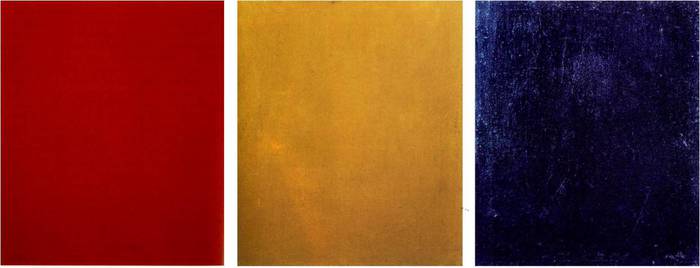
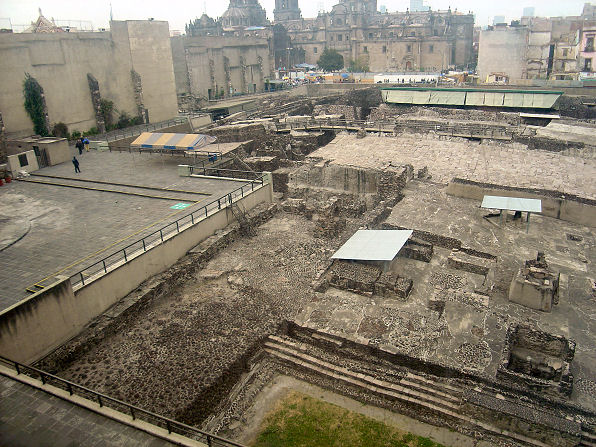
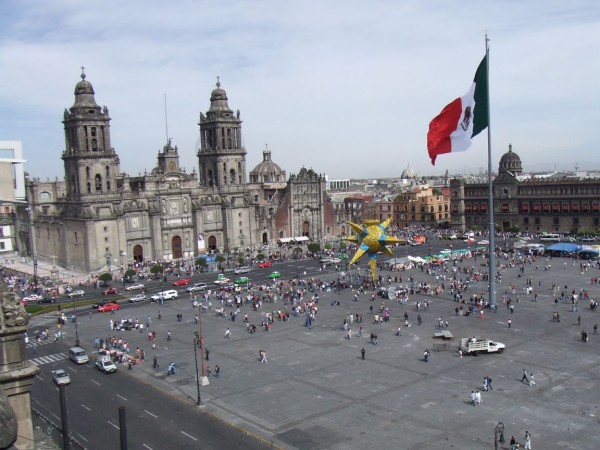
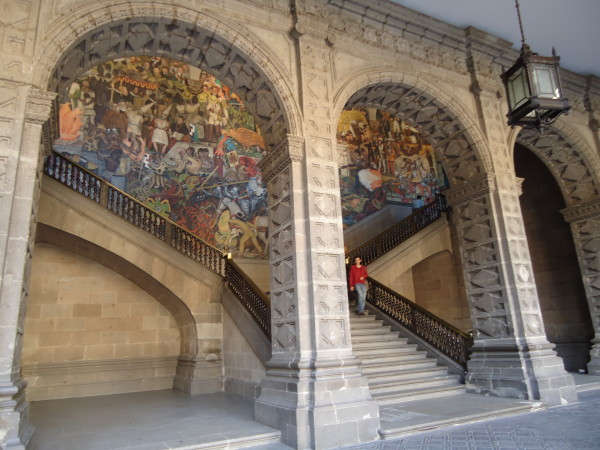
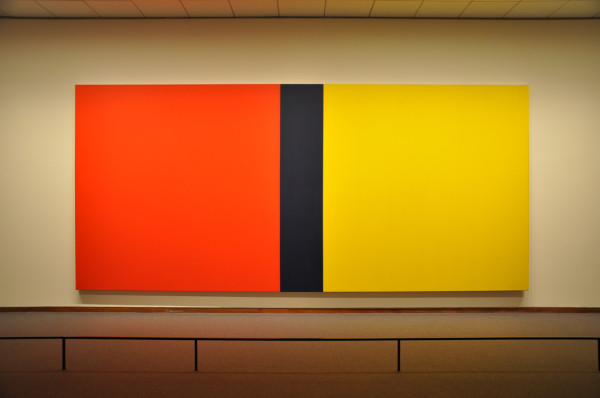

1 comment
Do you mean Jose Clemente Orozco